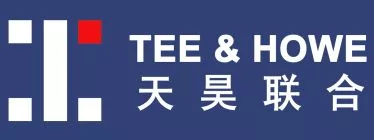1) Additional actions (Article 9) that infringe trade secret:
- Electronic intrusion.
- Violation of confidentiality obligation.
- Instigating, seducing, helping others to violate confidentiality obligations or violating the right owner's requirements for conserving trade secrets, obtaining, disclosing, using or allowing others to use the right owner's trade secrets.
- In addition to business operations, other natural person, legal entity, non-legal entity performing the acts defined in Article 9 also infringe trade secret.
2) Increasing compensation for trade secret infringement as below (Article 17):
- Business operator infringing trade secret in bad faith and in case of gross violation, multiplying the compensation determined according to the loss of the right owner or profit made by the infringer by 1 to 5 times. [Note: This is new]
- Increasing the cap of statutory damage to RMB 5 million. [Note: From RMB 3 million]
3) For administrative punishment against trade secret infringement (Article 21):
- Additionally covering other natural person, legal entity, and non-legal entity [Note: see 1)d) above]
- Confiscate illegal income. [Note: this is new]
- Increase fine to RMB 100,000 to 1 million [Note: from RMB 0.5 million], and for case of gross violation, increase fine to RMB 0.5 to 5 million [Note: from RMB 3 million].
4) Ease of proof of trade secret infringement (New Article 31):
In a civil case, when the trade secret right owner has provided preliminary evidence showing that measures have been taken to maintain the trade secret, and reasonably showing that the trade secret has been infringed, the alleged infringer should prove that the trade secret asserted by the right owner is not that defined by this Law.
When the trade secret right owner has provided one of the following preliminary evidences reasonably showing that the trade secret has been infringed, the alleged infringer should prove that the trade secret was not infringed:
- Evidence showing that the alleged infringer has access to or has opportunity to access to the trade secret, and the information used by the alleged infringer is essentially the same as the trade secret.
- Evidence showing that the trade secret has been disclosed and used or at risk of being disclosed and used by the alleged infringer.
- Other evidence showing that the trade secret is infringed by the alleged infringer.
The content of this article is intended to provide a general guide to the subject matter. Specialist advice should be sought about your specific circumstances.


